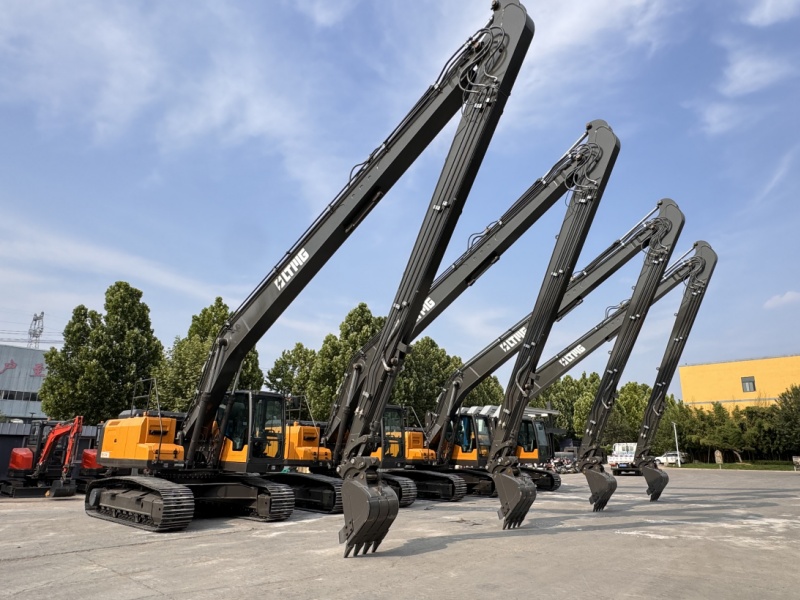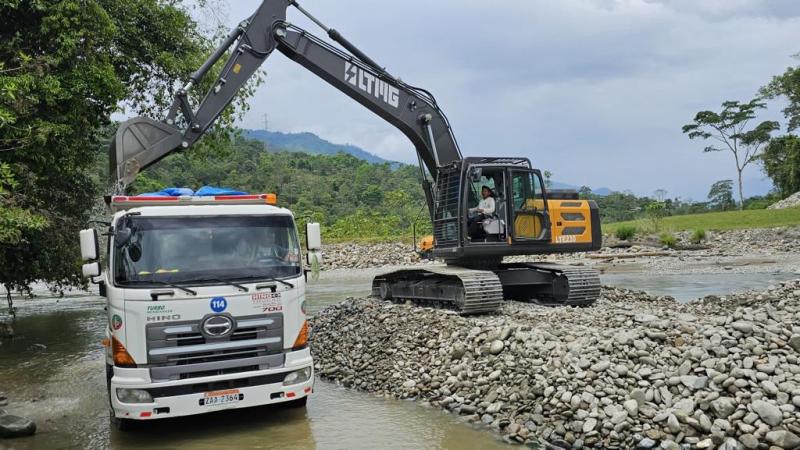Crawler vs. Wheeled Excavator: The 2 Most Common Types Explained
Oct 24, 2025
In modern-day construction, municipal maintenance, street building, agricultural operations, and mining projects, the excavator is a quintessential piece of core equipment. While the market affords many excavator types, the most frequent and widely-used workhorses fall into two major categories: the Crawler Excavator and the Wheeled Excavator.
Understanding the wonderful traits and perfect functions of these two machines is imperative for companies seeking to decrease operational charges and increase on-site efficiency. It additionally empowers clients to choose the most correct and comprehensive gear solution for their needs.
Overview: The Two Most Common Excavator Types
These two excavator types dominate the market because they effectively cover the vast majority of job site requirements, from urban roads to rugged, off-road terrain, setting the industry's standard configuration.
Type
Undercarriage (Structure)
Key Strengths & Specialty
Primary Applications
Crawler Excavator
Steel Tracks
Powerful digging force, adapts to harsh terrain
Construction sites, mining, mountainous areas, and foundation work
Wheeled Excavator
Rubber Tires
Fast travel speed, road-friendly
Municipal roads, urban projects, landscaping
Crawler Excavators: Power and All-Terrain Capability
1. Structural CharacteristicsThe crawler excavator makes use of a metal undercarriage, which gives a giant floor contact area. This effects in a gold standard balance and low floor pressure, making it noticeably well-suited for tender ground, wetlands, mud, or sloped terrain.
2. Key Advantages (Demonstrating Expertise)* Superior Digging Force: The steady music base permits a heavier counterweight and an extra-strong hydraulic system, maximizing digging energy for heavy-duty applications.* Excellent Mobility on Rough Terrain: Tracks furnish extraordinary traction and mobility on uneven, rugged, or muddy surfaces,s the place wheeled machines would struggle.* High Operational Stability: The huge footprint and low core of gravity ensure the desktop is fairly secure at some point of 360-degree slewing (swinging) actions.* Better Anti-Tipping Performance: This steadiness makes it a safer choice for deep excavation and continuous, high-intensity operations.
3. Typical Application Scenarios
Infrastructure earthmoving (e.g., foundation digging, site grading)
Mining and quarrying
Hydraulic engineering (e.g., river dredging, embankment work)
Hillside and mountainous construction
Major road and bridge foundation projects
Summary: The crawler excavator is the definitive choice for power, stability, and all-terrain adaptability.
Wheeled Excavators: Mobility and Urban Efficiency
1. Structural CharacteristicsThe wheeled excavator makes use of a rubber tire pressure system. This allows it to journey without delay on paved roads at excessive speeds, barring the requirement of a separate transport trailer.2. Key Advantages
*Fast Travel Speed: Capable of speeds up to 30-40 km/h (20-25 mph), they provide excessive efficiency when transferring between a couple of job sites within a city.*Road-Friendly: Rubber tires cause minimal injury to pavement (asphalt or concrete), making them best for city and hard-surface projects.* Flexible Site-to-Site Transfer: This self-transfer functionality substantially saves on transport fees and time related to loading/unloading a crawler.*Smaller Footprint: They are regularly extra compact and maneuverable, making them more ideal for city or confined-space operations.
3. Typical Application Scenarios
Municipal engineering (e.g., digging for drainage pipes, utility repairs)
Urban building and landscaping
Small-scale demolition and roadside clearing
Highway upkeep and emergency response (e.g., clearing debris)
Conclusion: The wheeled excavator is the preferred choice for flexibility, speed, and urban roadwork.
Crawler vs. Wheeled: How to Choose the Right Excavator
The choice between a crawler and a wheeled excavator ultimately depends on your primary operating environment and mobility needs.
Selection Criteria
Crawler Excavator
Wheeled Excavator
Terrain Adaptability
Excellent: Rough / Mud / Slopes
Limited: Best on hard surfaces / urban roads
Mobility
Site-Specific: Low
Very High: Excellent
Digging Performance
High (Heavy-Duty)
Medium (Municipal-Grade)
Transfer Efficiency
Low: Requires trailer/flatbed transport
High: Can self-transfer quickly
Application Environment
Off-road, large-scale projects, harsh conditions
Urban, municipal maintenance, paved roads
Selection Advice (Summary)
If you frequently work in mines, large-scale earthmoving sites, off-road conditions, or need heavy-load capability, → Choose a Crawler Excavator.
If your work is primarily on urban roads, or for municipal, landscaping, and utility projects requiring frequent moves, → Choose a Wheeled Excavator.
Conclusion
As the two most common types of excavators, crawler and wheeled models each offer distinct advantages for specific applications. The former represents power and all-terrain capability, while the latter represents mobility and urban efficiency.
Making the correct choice based on your job site requirements is a critical step in boosting operational efficiency, optimizing costs, and ensuring your project stays on schedule.
📮Email: market@ltmg.com
📞WhatsApp/Wechat: +86 19559207570

